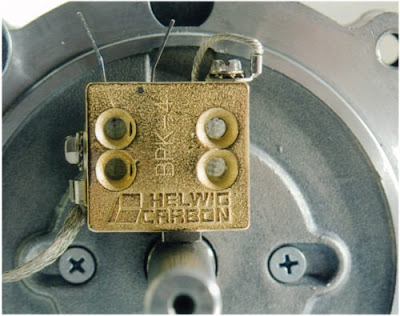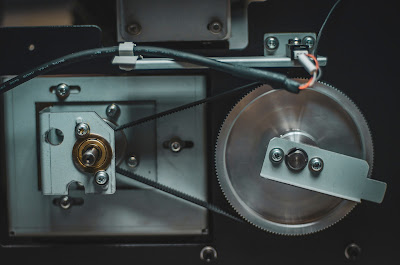Ceramic bearings for non-magnetic ultrasonic motors
In recent years, there has been a growing demand for high-performance motors in various industrial and scientific applications. Ultrasonic motors have gained popularity due to their ability to deliver fast and precise movements, but one significant challenge faced in their design is the requirement for non-magnetic bearings. This requirement is to prevent magnetic interference and disturbances to surrounding equipment or materials. Ceramic bearings have proven to be an ideal solution to this problem, offering a range of benefits such as high strength, low friction, and excellent corrosion resistance.
This blog post aims to explore the use of ceramic bearings in non-magnetic ultrasonic motors. We will discuss the various types of ceramic materials used in bearing design and their properties, such as silicon nitride and zirconia, and their advantages over traditional metal bearings. Additionally, we will examine the important factors to consider when selecting ceramic bearings for ultrasonic motor applications, such as load capacity, temperature resistance, and vibration tolerance. Finally, we will highlight some of the significant advances made
1. Introduction to ceramic bearings and ultrasonic motors
Ceramic bearings are increasingly popular in many industries for their numerous benefits over traditional steel bearings, including high temperature resistance, high stiffness, low thermal expansion, and high wear resistance. Ultrasonic motors, on the other hand, are a type of non-magnetic motor that utilizes high frequency vibrations to produce rotary motion. When combined, ceramic bearings and ultrasonic motors produce a powerful and effective solution for various applications, such as in medical equipment and aerospace technology. In this document titled "Ceramic Bearings for Non-Magnetic Ultrasonic Motors," we will explore the basics of these technologies and their advantages in detail.
2. Benefits of using ceramic bearings in non-magnetic ultrasonic motors
Ceramic bearings have become an increasingly popular choice in non-magnetic ultrasonic motors due to the numerous benefits they offer. Firstly, ceramic bearings are extremely durable and long-lasting, making them ideal for use in high-speed applications that require consistent performance over extended periods of time. Additionally, ceramic bearings are lightweight and have a low coefficient of friction, resulting in reduced wear and tear on system components and improved overall efficiency. Another key benefit of ceramic bearings is their resistance to corrosion and wear, even in harsh or corrosive environments, ensuring long-lasting and reliable operation. These benefits make ceramic bearings an excellent choice for use in non-magnetic ultrasonic motors, where high-performance, efficiency, and durability are critical factors.
3. Comparison of ceramic bearings with traditional steel bearings
The use of ultrasonic motors in industries such as aerospace, robotics, and semiconductor manufacturing has increased significantly in recent years. As a critical component of the motors, bearings play a crucial role in the performance and efficiency of the overall system. While steel bearings have been conventionally used, ceramic bearings have emerged as a popular alternative due to their superior properties. This paper aims to provide a comparison between ceramic bearings and traditional steel bearings in the context of their use in non-magnetic ultrasonic motors. The comparison will cover factors such as durability, friction, heat resistance, and magnetic properties, highlighting the advantages and disadvantages of each type of bearing.
4. Factors to consider when choosing ceramic bearings for ultrasonic motors
Ceramic bearings are an essential component of non-magnetic ultrasonic motors. Their high stiffness and low friction are crucial for the efficient operation of these motors. When choosing ceramic bearings, there are several factors to consider. First, the material of the bearing must be carefully selected. Silicon nitride is a popular choice due to its high strength and durability. However, other materials such as zirconia may be more suitable for certain applications. Second, the size and shape of the bearing must be appropriate for the specific motor design. Third, the precision of the bearing must be carefully evaluated, as any imperfections will have a negative impact on the motor's performance. Finally, it is essential to consider the operating conditions of the motor, including temperature, humidity, and exposure to chemicals or other environmental factors. A thorough understanding of these factors is crucial for selecting the optimal ceramic bearings for non-magnetic ultrasonic motors.
5. Best practices for installation and maintenance of ceramic bearings in ultrasonic motors
To ensure optimal performance and longevity in non-magnetic ultrasonic motors utilizing ceramic bearings, proper installation and maintenance practices must be followed. The following best practices have been identified to ensure the optimal operation of ceramic bearings in ultrasonic motors:
1. Handle ceramic bearings with extreme care to avoid damage to the surfaces, which can cause premature wear and failure.
2. Use the appropriate tools and techniques when installing ceramic bearings to avoid causing stress or damage to the components.
3. Ensure proper lubrication is used in ceramic bearings to reduce friction and maintain longevity. It is important to use the correct lubricant type and amount to avoid potential contamination or damage to the bearings.
4. Regularly monitor and inspect the bearings for signs of wear or damage, such as unusual noise or vibration, excessive heat, or visible degradation.
5. Replace bearings as recommended in the manufacturer's guidelines, based on the operating conditions and duration of use. By following these best practices, users can maximize the service life and reliability of ceramic bearings in non-magnetic ultrasonic motors.
In conclusion, ceramic bearings are proving to be a viable solution for non-magnetic ultrasonic motors. This technology is opening up a world of possibilities in fields such as medical equipment, robotics, aerospace, and more. The benefits of using ceramic bearings include increased durability, higher efficiency, and lower noise levels. As research and development continue to push the boundaries of technology, it's exciting to see how ceramic bearings will continue to play a crucial role in the advancement of non-magnetic ultrasonic motors.



Megjegyzések
Megjegyzés küldése